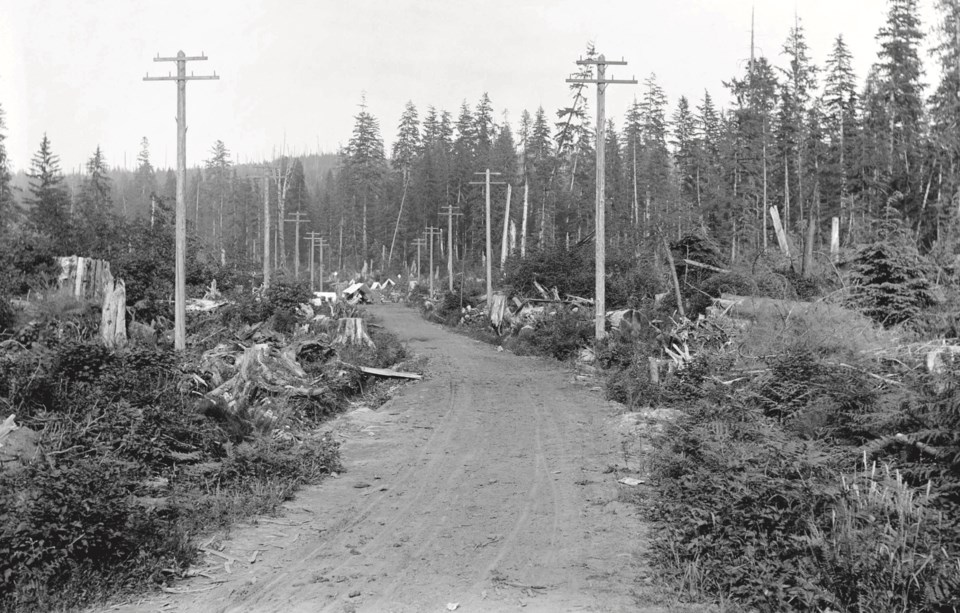The Barnet Highway might be a traffic snarl for commuters.
But without it, the Tri-Cities might never have grown into the thriving communities they are today, says a local historian and former steward of some of that growth.
Ralph Drew, who served as mayor of Belcarra for 35 years and has self-published several books about local history, spent some of his pandemic downtime turning his historian’s eye toward specific aspects of life in the Tri-Cities.
Like getting around.
Drew said Tri-City commuters have a love-hate relationship with the Barnet.
On a good day, the highway provides a quick and convenient way to get into Â鶹´«Ã½Ó³»or North Burnaby from Port Moody and Coquitlam.
But when it’s busy, it can certainly be a slog.
But imagine how rough it was in 1890, when James McLaren of the North Pacific Lumber Company wrote to the provincial government requesting construction of a wagon road to replace the existing rough trail that extended from Port Moody to his mill and adjacent townsite on the Burrard Inlet at the foot of Burnaby Mountain.
After an acknowledgement of his request wasn’t followed by actual construction, McLaren wrote again and the government agreed to spend $2,000 on the five-mile connection.
It took another 10 years for the wagon road to be completed.
In the meantime, the lumber mill was forced to close because of a worldwide depression from 1893–1896 then started up again in 1899.
Drew said construction of the road, just wide enough to accommodate a horse-pulled wagon, posed many challenges.
Situated at the bottom of Burnaby Mountain’s steep slopes, it was prone to washouts in heavy rain, and boggy sections had to be bridged by embedding logs into the loamy soil.
Sometimes they just sank out of sight.
By the time the wagon road was completed in 1903, there was already talk of extending a connection west from the mill to Hastings Street in North Burnaby, where it could go on into Vancouver.
The advent of power lines from the new B.C. Electric Railway’s new power plant at Buntzen Lake to connect with substations in Â鶹´«Ã½Ó³»and Burnaby gave extra impetus to the westward connection.
At first, Drew said, Burnaby was cool to the idea, as the city foresaw the potential eastward migration of growth if there was an overland link between Â鶹´«Ã½Ó³»to the unincorporated town of Port Moody and beyond.
But in May 1906, the clerk for the District of Burnaby was instructed to apply to the provincial road surveyor to open the route from Boundary Road to the Barnet Road.
Seven years later, Burnaby council approved the modernization of six miles of the hard dirt surface by covering it with wood planks.
In 1913, a tramline across North Burnaby was added to the transportation mix and engineers began work on improving the road, including determining ways to reduce some of its steep gradients.
The onset of WWI slowed the project’s progress but by 1920 the route was recognized as part of a trunk road that would eventually connect to Mission when completed.
And while it took another 10 years for the route to be fully paved and classified as an arterial road, Drew said the Barnet had already become an important conduit for people and commerce as the Lougheed Highway had yet to be constructed.
“It made opportunities available in Port Moody,” he said, adding Coquitlam and Port Coquitlam also started to blossom from the link.
Over the years proposals for other highway connections to the Tri-Cities came and went, including one plan to build a highway over Burnaby Mountain, and another that sliced up through Coquitlam’s Chines neighbourhood.
But the old two-lane Barnet endured despite almost annual washouts in heavy rainstorms, the occasional landslide and frequent collisions along its dark, narrow and twisting route.
Finally, in 1991, it was decided the Barnet needed to be widened.
Five years — and $105 million — later, its four lanes, that included HOV lanes in each direction, were opened to traffic.
Although a subsequent study by a UBC student found the additional roadway actually increased travel times for commuters.
• To read more of Drew’s local histories, as well as links to his books, go to

